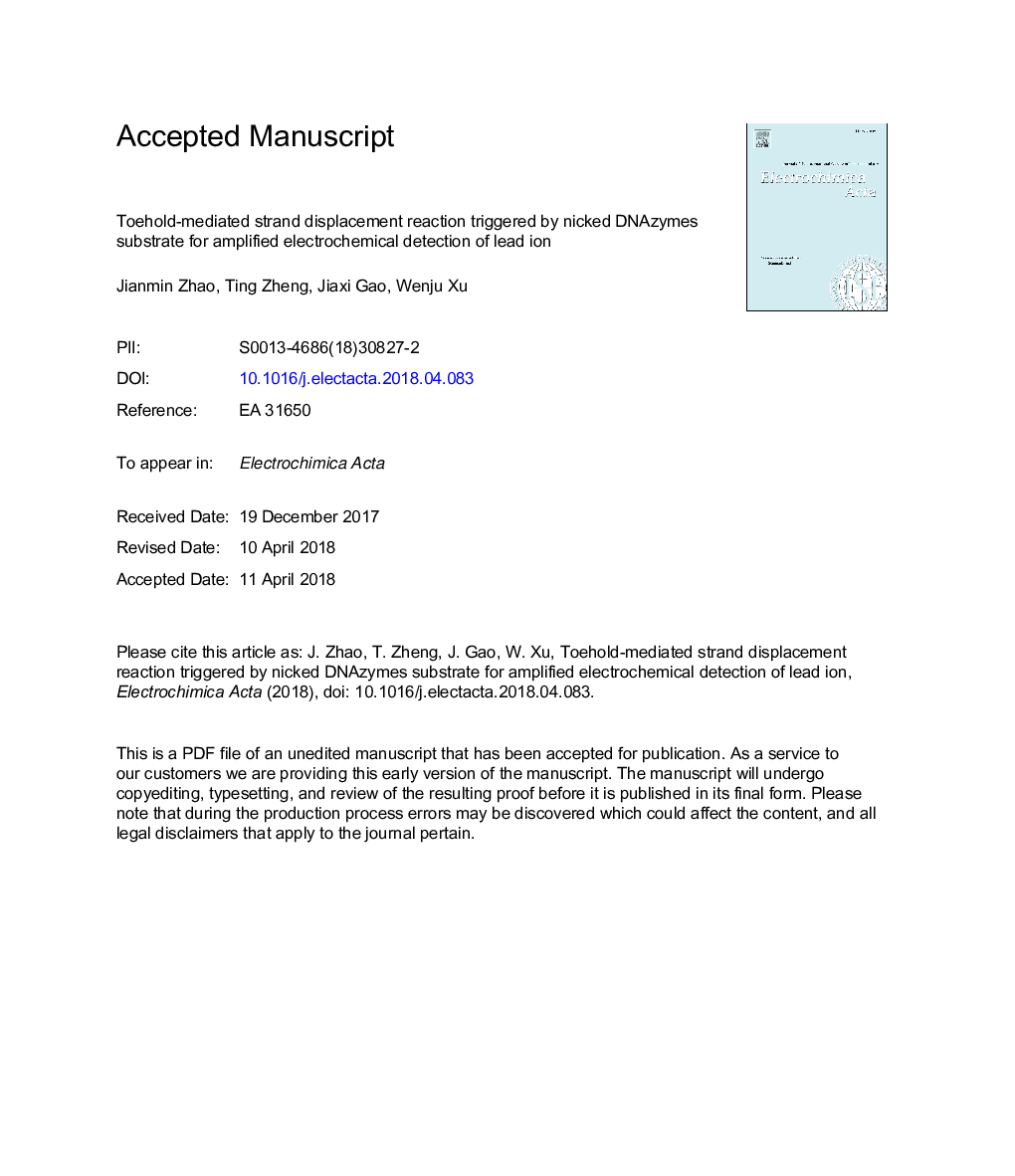| Article ID | Journal | Published Year | Pages | File Type |
|---|---|---|---|---|
| 6602950 | Electrochimica Acta | 2018 | 31 Pages |
Abstract
Searching for a sensitive analytical method for the detection of lead ion (Pb2+) without involving any enzymes is of great significance in environmental monitoring. Herein, based on the integration of toehold-mediated strand displacement reaction (TSDR) and the electrocatalysis of magnetic Fe3O4 toward electron mediator methylene blue (MB) for signal amplification, a sensitive electrochemical biosensor for Pb2+ was developed by using Pb2+-specific DNAzymes as recognition probe. The electrode surface was firstly modified with Au nanoparticles (AuNPs)-loaded Fe3O4 nanocomposites (AuNPs@Fe3O4) and a DNA duplex containing the capture probe (NH2-CP) with two specific toehold sequences. Fuelled by the cleaved substrate fragments (rSS) of Pb2+-specific DNAzymes, TSDR was activated to allow for the complete assembly of MB-labelled signal probe (MB-SP) through the hybridization with NH2-CP, resulting in the spatial proximity of MB close to Fe3O4 in the modified electrode surface. In this case, the amplified electrochemical output signal was further enhanced due to the robust electrocatalysis of Fe3O4 toward MB reduction. Thus, the developed sensitive biosensor for Pb2+ exhibited a reliable linear range of 1 pM-500â¯nM with the limit of detection of 0.32 pM. Importantly, by changing the specific DNAzymes, the proposed assay platform would be easily extended to quantitative detection of other metal ions without involving any enzymes and would be potential and promising for environment monitoring.
Related Topics
Physical Sciences and Engineering
Chemical Engineering
Chemical Engineering (General)
Authors
Jianmin Zhao, Ting Zheng, Jiaxi Gao, Wenju Xu,
